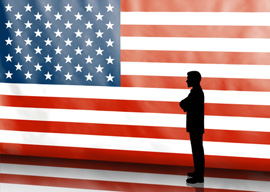
June 22, 2012

In introducing his new book, Leo Strauss and the Conservative Movement in America, Paul Gottfried identifies a fundamental divide between neoconservatives and the traditional right. The divide is over the question: What is this nation, America?
Straussians, writes Gottfried, “wish to present the construction of government as an open-ended rationalist process. All children of the Enlightenment, once properly instructed, should be able to carry out this … task.”
For traditional conservatives, before the nation is born, “ethnic and cultural preconditions” must exist. All “successful constitutional orders,” he writes, “are the expressions of already formed nations and cultures.”
To the old right, America as a nation and a people already existed by 1789. The Constitution was the birth certificate the nation wrote for itself, the charter by which it chose to govern itself. The real America had been born in men’s hearts by the time of Lexington and Concord in 1775.
In a recent issue of Modern Age, Jack Kerwick deals with this divide.
Irving Kristol, he writes, and quotes that founding father of modern neoconservatism, saw America as “a ‘creedal’ nation, a nation to which anyone can belong irrespective of ‘ethnicity or blood ties of any kind, or lineage, or length of residence even.’”
“For Kristol and his ilk,” Kerwick goes on, “one’s identity as an American is established by nothing more than an intellectual exercise whereby one rationally assents to the propositions encapsulated in the Declaration.”
“Given this unqualified quasi-religious commitment to ‘the Rights of Man,’ (for a neoconservative) America must be future-oriented, for as long as human rights are threatened, and regardless of where they are imperiled, her work in the world will never be complete.”
Here one arrives at a root cause of the conflict between neocons and the right—a conflict that did not mature until the end of the Cold War.
Given their belief in America as an ideological nation and their fear that the party of George McGovern and Jimmy Carter was failing to wage the Cold War effectively against our ideological foe, communism, it was natural that the neocons would defect from their party to align with the party of Ronald Reagan.
By the 1980s, they were allies of the Old Right for the last decade of the Cold War.
It was when that Cold War ended that the chasm came into full view.
Some conservatives began to argue that now that the Soviet Union was history and Mao’s China had given up on world revolution, our war was over and we should bring our troops home and become again “a normal country in a normal time.”
Neoconservatives cried that this was “isolationism,” and backed U.S. interventions in Panama, Haiti, Somalia, Kuwait and Iraq.